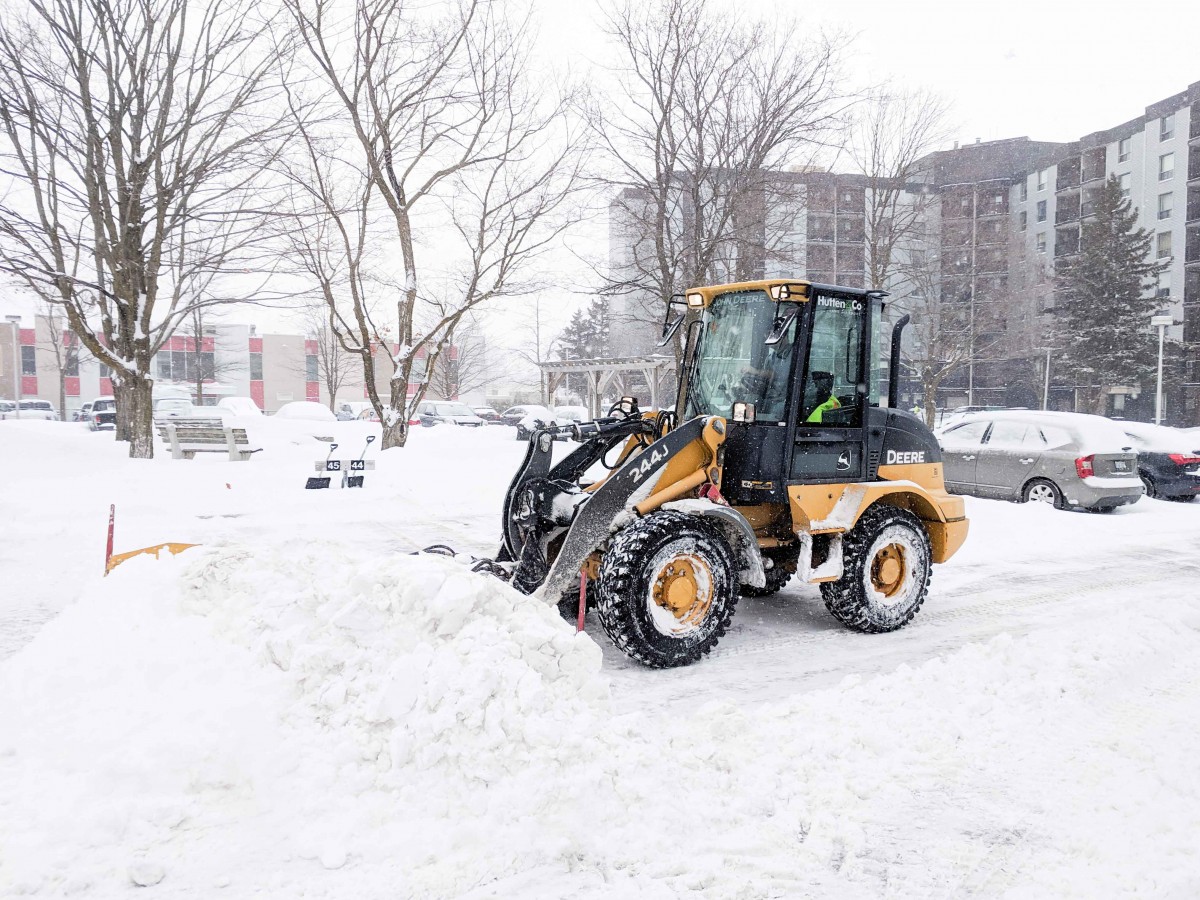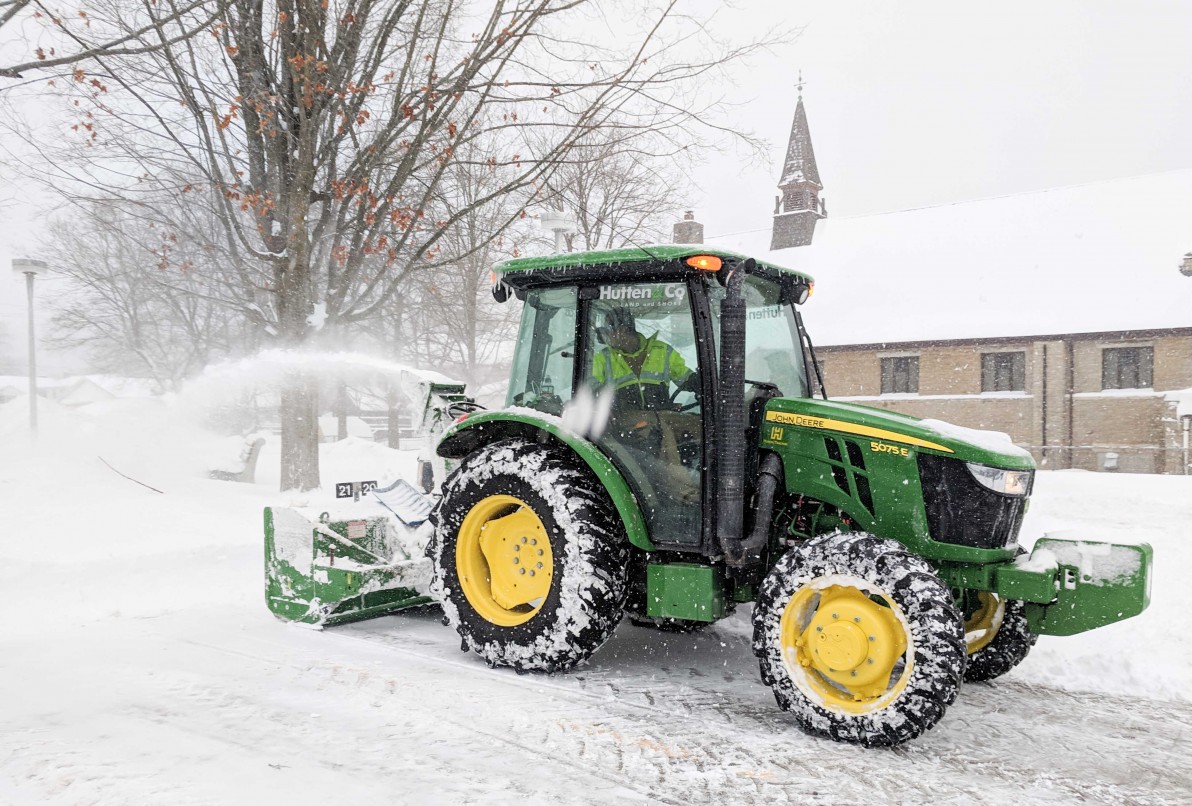Snow and ice can be frustrating to deal with. Whether you’re a commercial property owner or manager anxious about whether your firm is going to arrive on time to clear the parking lot, or a homeowner who’s sick of the back pain you get from shovelling… fear not!
We get it! And it’s why we offer a full suite of snow & ice management services in Owen Sound and Port Elgin.
But what goes into the actual management of it?
We’re glad you asked. Find out below!
Proper snow & ice management techniques: a primer.
At first glance, it can seem like managing snow and ice is a one-size-fits-all task. The truth? It isn’t. There are lots of variables to consider, like the type of precipitation and the type of property.
Managing snow on larger properties requires a lot of preparation and proactivity. Because when snow and ice aren’t managed properly, they quickly become a liability — getting in the way of business, causing accidents and making for disgruntled residents.
Here are some of the most important snow & ice management techniques we practice on every property we work on.
1. Driving our snow & ice routes on a daily basis for physical inspection.
Up here in Owen Sound and Port Elgin, it snows pretty much all winter long. With all the lake effect flurries and snow squalls, it’s less about storms and more about making sure properties are safe and clear every day.
That’s why our team does daily drive-throughs of all of our snow & ice routes. And also why we inspect sites every day to make sure there are no new snowdrifts or other potential issues.
2. Showing up consistently.
Snow here in the Grey & Bruce Counties is a constant. For this reason, we look more to snow accumulation and icy occasions than specific times for dispatching our crews.
Our crews arrived on commercial properties once for every two inches of accumulation. This is measured on the daily drive-throughs of our routes — we physically measure with a measuring tape and take photos. Our goal is to be done everything by 8 am each morning (unless it’s a particularly snowy day).
We know that not clearing snow frequently enough creates slipping hazards and makes removal much more difficult than it has to be. So we’re as proactive as we can be!

3. Applying the right amounts of salt and deicer or sand.
If it’s a minor snowfall, we apply salt and deicers to minimize accumulation (if stipulated in your contract). These stop slipping hazards in their tracks by preventing ice from latching onto surfaces.
So what qualifies as a minor snowfall? Anything under two inches. These don’t require any clearing or plowing — salt and de-icers (or sand) will do the hard work of melting the snow before it can cause issues.
If it’s especially cold (under -10 Celcius), salt won’t have much of an effect. For this reason, we offer a range of material options: ClearLane (an enhanced de-icer that works up to -17 Celcius on asphalt lots), and a sand/salt mix. The sand acts as a traction aid if the salt hasn’t managed to melt all of the ice. Of course, we agree on what materials we will use on your property before you sign your contract!
4. Developing clear contracts & site maps.
Every property that we work with has a custom strategy in place before winter begins. For commercial properties, we will work with you to develop a site plan.
This plan uses a map of your property to note where snow will be piled, where salt and deicers will be applied, and where we’ll plow with heavy equipment versus where we’ll hand shovel. This way we can prioritize the areas that need to be cleared first when we show up — like entrances and high-traffic areas.
Residential customers have much simpler terms. These properties get their driveway cleared for every three inches of accumulation. No need for a site map.
5. Submitting all of our notes and activity with monthly invoices.
Every day, we physically inspect conditions in the morning, driving through all of our routes, physically inspecting for any accumulation, drifting, or freeze/thaw conditions that need to be dealt with.
Any activity is logged on our timekeeping app, which is time-stamped, GPS location stamped, and at the same time, pulls weather conditions from the nearest weather station. But because weather can be very localized, we also add our notes for the condition on-site to the timekeeping log.
This information is all submitted to you along with monthly invoicing!
Choose a snow & ice management company with expertise.
These techniques are ones we developed over time as our company’s snow and ice expertise has grown. Today, we’re members of the Snow & Ice Management Association and have staff members certified.
Along with certification, we also have bi-weekly crew meetings with the snow team throughout the snow season to prevent any accidents or hazards. We firmly believe that this training is (and has been) crucial for mitigating risks for our customers!
If you want to find out more about our snow & ice management services, just reach out!




